Soviet Atomol projects
The first domestic strategic bombers had an insufficient range. So, after several years of work, the design team led by V.M. Myasishchev succeeded in raising the range of the 3М aircraft to 11-11,5 thousands of kilometers. When using the in-flight refueling system, this figure increased. However, strategic bombers of that time had a lot of problems. In light of the increased range, the greatest difficulty was to ensure timely refueling under the risk of attack by enemy fighters. In the future, due to the development of air defense tools, the range problem became more acute, and it also took to begin work on the creation of strategic-class supersonic aircraft.
By the end of the fifties, when they began to consider these issues, it became possible to conduct research on alternative power plants. One of the main options was the nuclear power plant. In addition to ensuring a high range of flight, including supersonic, they promised great savings financially. Under the conditions of that time, a flight to the maximum range of one regiment of strategic bombers with jet engines could “eat” several thousand tons of kerosene. Thus, all the costs of building a complex nuclear power plant were fully justified. However, Soviet engineers, like American, faced with a number of problems inherent in such power plants.
Home
The first documentary evidence of the existence of the Soviet program of atomic-powered aircraft refers to the 1952 year, when the future academician A.P. Alexandrov sent I.V. Kurchatov document, which said about the fundamental possibility of creating a nuclear power plant for aircraft. The next three years were spent on a slow study of the theoretical aspects of the issue. Only in April 1955, the USSR Council of Ministers issued a decree according to which the design offices of A.N. Tupolev, S.A. Lavochkina and V.M. Myasishchev should have begun the development of a heavy aircraft with a nuclear power plant, and the design organizations ND Kuznetsova and A.M. Lyulki entrusted to create engines for them. At this stage, the Soviet program for the creation of aircraft with a nuclear power plant was divided into several projects that differed from each other by the type of aircraft itself, the engine circuit, etc.
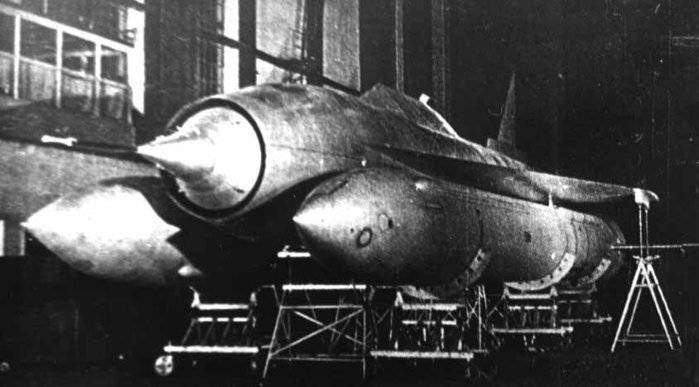
For example, OKB-301 (chief designer SA Lavochkin) commissioned the creation of an intercontinental cruise missile "375". Basis for this weapons was supposed to be a rocket "Storm", also known under the designation "350". After a series of studies, the appearance of the new 375 rocket was determined. In fact, it was still the same "Storm", but instead of a ramjet jet engine, it was proposed to install a small nuclear reactor on kerosene. Passing through the channels inside the rocket, the outside air had to come into contact with the reactor core and heat up. This simultaneously prevented the reactor from overheating and provided sufficient traction. It was also planned to change the layout of the original structure due to the lack of need for fuel tanks. The development of the rocket itself was relatively simple, but, as is often the case, the subcontractors failed. OKB-670 under the guidance of MM. For a long time, Bondaryuk could not cope with the creation of a direct-flow nuclear engine for the 375 product. As a result, a new cruise missile was not even built in metal. Shortly after Lavochkin’s death in 1960, the 375 theme, along with the original Storm, was closed. By this time, the design of the nuclear engine had moved off dead center, but the tests of the finished sample were still far away.
M-60
More complex task was given to the teams of V.M. Myasishchev and A.M. Cradles. They had to make a strategic bomber with a nuclear power plant. The design of the aircraft with the index "60" or M-60 initially seemed simple. It was supposed to deliver nuclear turbojets on the M-50 bomber under development, which would not require additional time and effort. M-60 was seriously considered a contender for the title of the first full-fledged atomol, not only in the USSR, but also in the world. Only a few months after the start of the project, it turned out that the construction of the “60 Products” was postponed for at least several years. In the project it was necessary to solve a lot of specific issues that previously simply did not arise before the domestic aircraft manufacturers.
First of all, questions were raised by the crew’s protection. Of course, it would be possible to seat the pilots in a monolithic metal capsule. However, in this case, it was necessary to somehow provide an acceptable overview, as well as to make some rescue systems. The second major problem of the M-60 project concerned the safety of ground personnel. According to preliminary calculations, after just one flight, such a bomber had to “fade” for a couple of months. Service of such equipment required a new approach, for example, the creation of some systems for remote work with nodes and aggregates. Finally, the 60 aircraft had to be made from new alloys: a structure built in accordance with the available technologies would have insufficient resources due to radiation and heat loads. Additional complexity of the project gave the selected type of engine: a turbojet open circuit.
All the technical problems associated with the characteristics of the result forced the designers to completely revise their first ideas. The glider of the M-50 could not be used with nuclear engines. This is how the new look of the 60 project appeared. Now the airplane looked like a mid-plane with a thin trapezoid wing. A stabilizer of a similar shape was planned to be installed on the keel. In front of the fuselage, air intakes of semicircular cross section were placed in front of the wing. They walked along the fuselage along its entire length, bending around the cargo compartment in the middle. Four open-cycle nuclear turbojet engines were placed at the very tail of the fuselage, assembled in a square 2x2 package.
In the nose of the M-60 was supposed to install a multi-layered capsule-cockpit. Maintaining the working pressure inside the cabin was carried out using a stock of liquefied air on board. Atmospheric air was quickly abandoned because of the possibility of radioactive particles entering the aircraft. Capsule-cabin to ensure an adequate level of protection had no glazing. The pilots were supposed to monitor the situation through periscopes, telesystems, and also with the aid of a radar station. To ensure takeoff and landing, it was planned to create a special automatic system. Interestingly, the plans for the automatic control system almost led to a change in the status of the project. An idea to make the M-60 completely unmanned. However, as a result of disputes, the military insisted on the creation of a manned aircraft. Simultaneously with M-60, a project for a flying boat M-60М was created. Such an aircraft did not need runways vulnerable to air strikes, and also made nuclear safety a little easier. The flying boat differed from the original 60 aircraft by the location of air intakes and other ski-type chassis.
Preliminary calculations showed that with a take-off weight of the order of 250 tons, the M-60 aircraft must have engine thrust at the level of 22-25 tons each. With such engines, a bomber at altitudes of about 20 kilometers could fly at a speed of about 3000 km / h. In the design office of A.M. The cradle was considered two main options for similar turbojet nuclear engines. The coaxial scheme meant placing a nuclear reactor at the place where the combustion chamber is located in conventional TRDs. In this case, the motor shaft passed directly through the design of the reactor, including through the core. Also considered the engine circuit, which received the conditional name "Yoke". In this engine variant, the reactor was moved away from the compressor shaft and the turbine. The air from the air intake along the bent pipe reached the reactor and in the same way got to the turbine. In terms of the safety of the engine units, the “yoke” scheme was more profitable, however, it lost to the coaxial engine in its simplicity of design. As for the radioactive hazard, in this aspect the schemes almost did not differ. Designers OKB-23 worked out two options for the layout of the engines, taking into account their size and design differences.
M-30
By the end of the development of the project M-60 and the customer, and the designers came to not very pleasant conclusions regarding the prospects of the aircraft. All recognized that with their advantages, nuclear engines have a number of serious flaws, both constructive and radiation in nature. At the same time, the entire program rested on the creation of nuclear engines. Despite the difficulties with the creation of engines, Myasishchev convinced the military of the need to further continue research and design work. At the same time, the new project implied the installation of closed-type nuclear engines.
The new aircraft was named M-30. Already by the end of the fifties, the designers decided on his appearance. It was an aircraft made according to the “duck” scheme and equipped with two keels. A cargo compartment and a reactor were located in the middle of the aircraft’s fuselage, and in the tail section there were six closed-cycle nuclear turbojet engines. The power plant for the M-30 was developed in the design bureau N.D. Kuznetsova and implied the transfer of heat from the reactor to the air in the engine through the coolant. The latter was considered lithium and sodium in the liquid state. In addition, the design of closed-type nuclear turbofan engines allowed the use of ordinary kerosene in them, which promised to simplify the operation of the aircraft. A characteristic feature of the new engine of the closed circuit was the absence of the need for a dense layout of the engines. Thanks to the use of a pipeline with coolant, the reactor could be securely closed with insulating structures. Finally, the engine did not emit a radioactive substance into the atmosphere, which made it possible to simplify the cockpit ventilation system.
In general, the use of a closed type engine turned out to be more profitable compared to the previous version. First of all, the benefit had a weight "embodiment". Of the 170 tons of take-off weight of the 30 aircraft accounted for the engines and heat transfer system and 38 to protect the reactor and crew. At the same time, the M-30 payload was 25 tons. The estimated flight performance of the M-30 was slightly different from the M-60 data. The first flight of a new nuclear power plant bomber was scheduled for 1966 year. However, several years before this, all projects with the letter “M” were abandoned. At first, OKB-23 was attracted to work on other topics, and later it was reorganized. According to some sources, the engineers of this organization did not even have time to deploy a full-fledged design of the M-30 bomber.
Tu-XNUMHLAL
Simultaneously with the OKB-23, Tupolev's designers worked on their project. Their task was a bit simpler: to refine the existing Tu-95 for use with a nuclear power plant. Until the end of 55, engineers were engaged in the development of various issues related to aircraft design, a specific power plant, etc. Around the same time, Soviet intelligence agents who worked in the United States began to send the first information about similar American projects. Soviet scientists became aware of the first flights of the American flying laboratory with a nuclear reactor on board. At the same time, the available information was far from complete. Therefore, our engineers had to brainstorm, according to the results of which they came to the conclusion that the reactor was simply “removed”, without using it as an energy source. Strictly speaking, that was true. In addition, the aim of test flights was that our scientists considered the measurement of various parameters directly or indirectly related to the effect of radiation on the design of the aircraft and its crew. Soon after, Tupolev and Kurchatov agreed to conduct such tests.
The development of the flying laboratory based on the Tu-95 was conducted in an interesting way. OKB-156 designers and atomic scientists regularly organized workshops in which the latter were the first to tell about all the nuances of nuclear power plants, their protection and design features. Thus, aircraft engineers received all the necessary information, without which the aircraft could not have been made. According to the memoirs of the participants of those events, one of the most memorable moments was the discussion of reactor protection. As the nuclear scientists said, the finished reactor with all the protection systems has the size of a small house. The design department of the design bureau became interested in this problem and soon developed a new reactor design, in which all units had acceptable dimensions and at the same time ensured an adequate level of protection. With the annotation in the style of “do not carry airplanes at home” this scheme was demonstrated to physicists. The new version of the reactor layout has been thoroughly tested, approved by nuclear scientists and accepted as the basis for a power plant for a new flying laboratory.
The main objective of the project Tu-95LAL (flying atomic laboratory) was to check the level of protection of the onboard reactor and the development of all the nuances of the design associated with it. Already at the design stage an interesting approach was taken. In contrast to the team Myasishchev, Tupolev decided to protect the crew only from the most dangerous directions. The main elements of radiation protection were located behind the cabin, while the remaining directions were covered with less serious packages of various materials. In addition, the idea of compact reactor protection, which with some changes was included in the Tu-95LAL project, was further developed. At the first flying laboratory, it was planned to test the applied ideas of protecting the units and the crew, and to use the data for further development of the project and, if necessary, design changes.
By 1958, the first test reactor was built for testing. He was placed in the overall simulator of the fuselage of the Tu-95. Soon, the test bench together with the reactor was sent to the testing ground near Semipalatinsk, where in 1959 the work reached the trial run of the reactor. Until the end of the year, it was brought to the rated capacity, as well as refined protection and control systems. Simultaneously with the testing of the first reactor was the assembly of the second, intended for the flying laboratory, as well as the alteration of the serial bomber for use in the experiment.
The serial Tu-95M No.7800408, when converted into a flying laboratory, lost all its weapons, including the equipment associated with it. Immediately after the cockpit, a five-centimeter lead plate and a package made of polymer materials 15 cm thick were installed. In the nose, tail and middle part of the fuselage, as well as on the wings, sensors were installed that monitor the level of radiation. An experimental reactor was placed in the rear cargo compartment. Its protection to some extent resembled that used in the cabin, but the reactor core was placed inside a circular protective casing. Since the reactor was used only as a radiation source, it was necessary to equip it with a cooling system. Distilled water circulated in close proximity to nuclear fuel and cooled it. Then the heat was transferred to the water of the second circuit, which dissipated the received energy with the help of a radiator. The latter was blown by the oncoming flow. The outer shell of the reactor as a whole fit into the contours of the fuselage of the former bomber, but the top and sides of the casing had to cut holes and cover them with fairings. In addition, the radiator intake device was brought to the bottom of the fuselage.
For experimental purposes, the protective casing of the reactor was equipped with several windows placed in different parts of it. Opening and closing of one or another window took place on command from the control panel in the cockpit. With the help of these windows it was possible to increase the radiation in a certain direction and measure the level of its reflection from the environment. All assembly work was completed by the beginning of 1961.
In May, 1961, the Tu-95LAL, first took to the air. Over the next three months, a 34 flight was carried out with a cold and operating reactor. All experiments and measurements proved the fundamental possibility of placing a nuclear reactor on board an aircraft. At the same time, several constructive problems were discovered, which were planned to be fixed in the future. And yet, the accident of such an aircraft, despite all the means of protection, threatened serious environmental consequences. Fortunately, all experimental flights of the Tu-XNUMHLAL went smoothly and without problems.
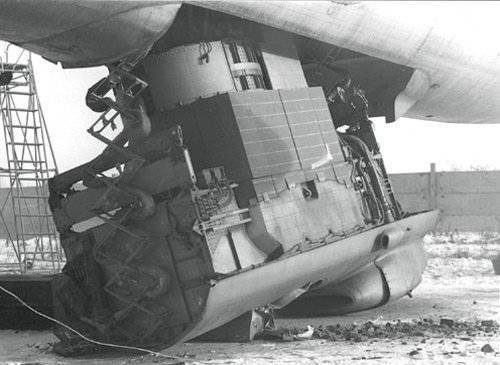
In August, the reactor was removed from the flying laboratory by 61, and the aircraft itself was parked at the airfield at the test site. A few years later, Tu-95LAL without a reactor was distilled to Irkutsk, where it was later written off and cut into scrap. According to some sources, the cause of the cutting of the aircraft was the bureaucratic affairs of the Perestroika times. During this period, the flying laboratory of the Tu-95LAL was allegedly considered a combat aircraft and was treated in accordance with international agreements.
Projects "119" and "120"
According to the results of tests of the Tu-95LAL aircraft, nuclear scientists completed the reactor for the aircraft, and in the design bureau of Tupolev they began work on the creation of a new atomol. Unlike the previous experimental aircraft, it was proposed to make a new one on the basis of the passenger Tu-114 with a fuselage of slightly larger diameter. The Tu-119 aircraft was supposed to be equipped with two kerosene turboprop engines NK-12М and two NK-14А, created on their base. "Fourteenth" engines, in addition to the standard combustion chamber, were equipped with a heat exchanger to operate in the mode of heating air from the reactor, according to a closed scheme. The layout of the Tu-119 to a certain extent resembled the placement of units on the Tu-95LAL, but this time the plane provided for the coolant pipelines connecting the reactor and two engines.
The creation of turboprop engines with heat exchangers to transfer heat from the reactors was not fast due to constant delays and problems. As a result, the Tu-119 did not receive the new NK-14A engines. Plans to create two flying laboratories with two nuclear engines each were not implemented. The failure of the first experimental aircraft "119" led to the failure of further plans, implying the construction of the aircraft immediately with four NK-14A.
The closure of the project Tu-119 buried and all plans for the project «120». This high-winged swept wing had to be equipped with four engines, and in the fuselage to carry anti-submarine equipment and weapons. Such an anti-submarine aircraft, according to calculations, could patrol for two days. The range and duration of the flight were actually limited only by the capabilities of the crew. Also in the course of the 120 project, the possibilities of creating a strategic bomber like the Tu-95 or 3М, but with six engines and a supersonic strike aircraft with low-altitude flight capability, were explored. Due to problems with the engines NK-14A all these projects were closed.
Nuclear "Antey"
Despite the unfortunate ending of the 119 project, the military did not lose the desire to get an ultra-long anti-submarine aircraft with a large payload. In 1965, it was decided to take the An-22 Antey transport aircraft as a basis for it. Inside the wide fuselage of this aircraft it was possible to place both the reactor, and a whole set of weapons, and the workplaces of operators, together with special equipment. As engines for the AN-22PLO aircraft, the NK-14А was again proposed, work on which gradually began to move forward. According to calculations, the duration of the patrol of such an aircraft could reach 50 (fifty!) Hours. Takeoff and landing were made with the use of kerosene, the flight at cruising speed — with the heat released by the reactor. It is worth noting, 50 hours were only the recommended duration of the flight. In practice, such an anti-submarine aircraft could fly more, until the crew lost the ability to work efficiently or until technical problems began. 50 hours in this case was a kind of warranty period during which the An-22PLO would have no problems.
Employees of the design office of OK. Antonova wisely disposed of the internal volumes of the “Antey” cargo compartment. Immediately behind the crew cabin, they placed a compartment for the target equipment and its operators, behind it they provided living rooms for rest, then they “inserted” a compartment for a rescue boat in case of an emergency landing on water, and in the rear part of the cargo cabin they placed a reactor with protection. At the same time there was almost no place for weapons. Mines and torpedoes offered to put in enlarged chassis fairings. However, after preliminary work on the layout, a serious problem emerged: the finished aircraft was too heavy. Nuclear engines NK-14A with 8900 hp simply could not provide the required flight performance. This problem was solved by changing the reactor protection design. After completion, its mass significantly decreased, but the level of protection not only did not suffer, but even slightly increased. In 1970, An-22 No.01-06 was equipped with a point source of radiation with protection made in accordance with later versions of the An-22PLO project. In the course of ten test flights, it turned out that the new option of protection fully justified itself, and not only in the weight aspect.
A full-fledged reactor was created under the direction of A.P. Alexandrova. Unlike previous designs, the new aviation the reactor was equipped with its own control systems, automatic protection, etc. To control the reaction, the new nuclear unit received an updated coal rod control system. In case of emergency, a special mechanism was provided that literally fired these rods into the reactor core. The nuclear power plant was mounted on an airplane No. 01-07.
The test program, codenamed Stork, began in the same 1970 year. During the tests, 23 flight was conducted, almost all passed without complaints. The only technical problem concerned the connector of one of the hardware units. Due to the outgoing contact during one of the flights the reactor could not be turned on. A small repair "in the field" allowed to continue full-fledged flights. After the 23 flight, tests of the An-22 with a working nuclear reactor on board were recognized as successful, the prototype was parked and the survey and design work continued on the An-22PLO project. However, this time the design flaws and the complexity of the nuclear power plant led to the closure of the project. The ultra-long anti-submarine aircraft was super-expensive and extremely complicated. In the mid-seventies, the project An-22PLO was closed.
***
After the cessation of work on the anti-submarine variant “Anthea”, other options for the use of atomic-powered aircraft were considered for some time. For example, it was seriously proposed to make on the base of the An-22 or similar machine a locking medium of strategic missiles. Over time, there were also proposals for improving security. The main thing was to equip the reactor with its own parachute-based rescue system. Thus, in the event of an accident or serious damage to the aircraft, its power plant could independently make a soft landing. The area of its landing was not threatened with infection. However, these proposals did not receive further development. Due to past failures, the main customer, represented by the Ministry of Defense, cooled down to the aircraft. The seemingly endless prospects of this class of technology did not withstand the pressure of technical problems and, as a result, did not lead to the expected result. In recent years, from time to time there have been reports of new attempts to create planes with a nuclear power plant, but half a century after the flights of the Tu-XNUMLAL flying laboratories no aircraft flew using the fission energy of uranium nuclei.
On the materials of the sites:
http://vfk1.narod.ru/
http://testpilot.ru/
http://airwar.ru/
http://nkj.ru/
http://laspace.ru/
http://airbase.ru/
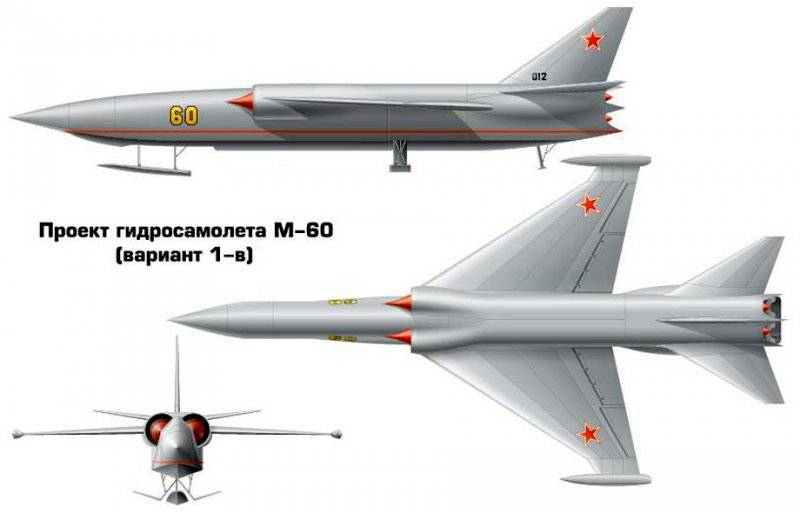
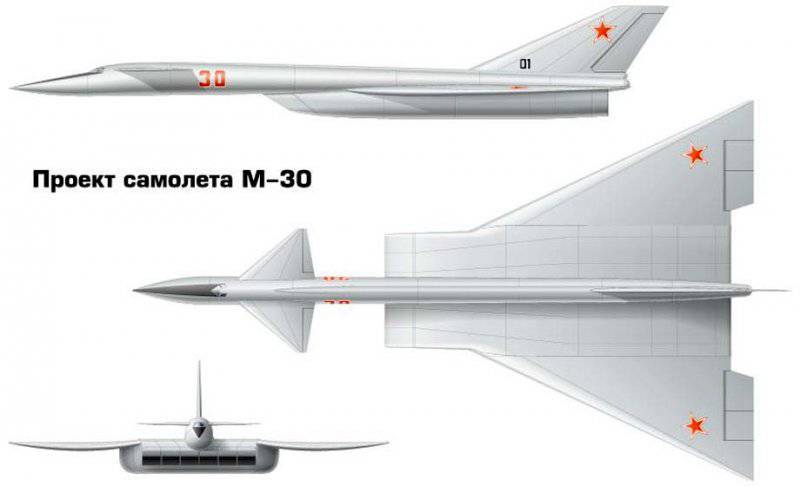
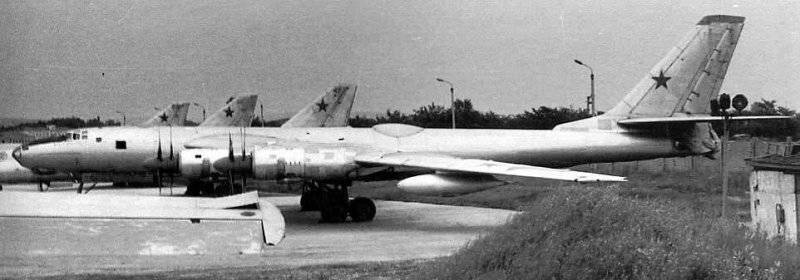
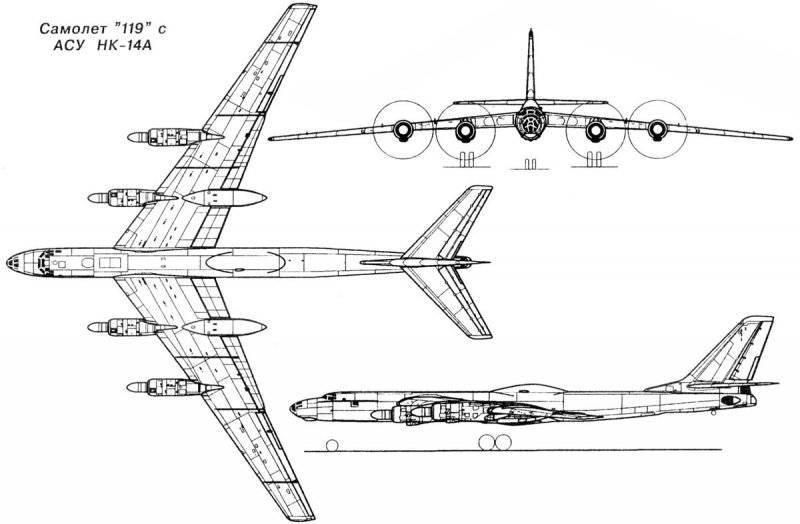
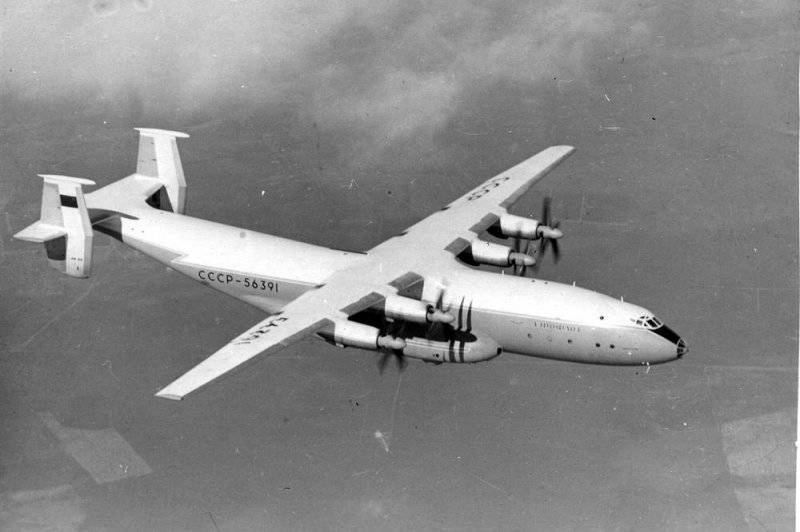
Information